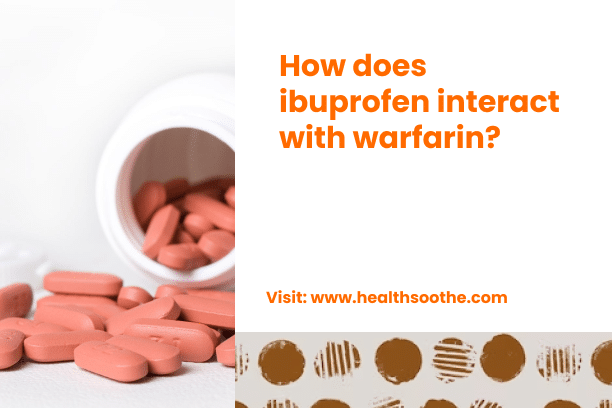Amoxicillin is prescribed for a broad range of bacterial infections and falls under the category of penicillin-type antibiotics. Its mechanism of action involves halting bacterial growth. It's important to note that this antibiotic specifically targets bacterial infections and is ineffective against viral infections like the common cold or flu. Misusing antibiotics unnecessarily can lead to reduced efficacy in treating future infections. Additionally, Amoxicillin is sometimes combined with other medications to manage stomach or intestinal ulcers caused by H. pylori bacteria and to prevent their recurrence.
How to use amoxicillin
Follow your doctor's instructions regarding how to take this medication, whether with or without food, typically every 8 to 12 hours. The dosage depends on your medical condition and how well you respond to the treatment.
Stay well-hydrated while using this medication unless otherwise advised by your doctor.
To ensure the best results, take this antibiotic at consistent intervals throughout the day. Establish a routine by taking it at the same time(s) daily to help you remember.
Continue taking this medication until you've completed the full prescribed amount, even if your symptoms improve within a few days. Abruptly stopping the medication could lead to a recurrence of the infection.
Inform your doctor if your condition persists or worsens.
Warfarin:
Warfarin is an anticoagulant medication, commonly referred to as a blood thinner. It works by interfering with the body's ability to form blood clots by inhibiting the synthesis of vitamin K-dependent clotting factors in the liver. Warfarin is used to prevent and treat blood clots in conditions such as atrial fibrillation, deep vein thrombosis (DVT), pulmonary embolism (PE), and after certain surgeries or heart valve replacements to reduce the risk of clot formation.
Warfarin requires careful monitoring of the international normalized ratio (INR) to ensure that the blood is thinned to a therapeutic level without increasing the risk of bleeding complications. Factors such as diet (especially vitamin K-rich foods), other medications, and health conditions can influence warfarin's effectiveness and dosage adjustments may be necessary based on regular INR tests. It's crucial for individuals taking warfarin to follow their healthcare provider's instructions closely, report any signs of bleeding or unusual bruising promptly, and attend regular monitoring appointments to ensure safe and effective anticoagulation therapy.
Read Also:M523 Pill: Uses, Dosage, Side Effects, Addiction - Meds Safety
Pros and Cons of amoxicillin and warfarin
Amoxicillin:
Pros:
- Effective Against Bacterial Infections
- Well-Tolerated
- Available in Different Forms
- Affordability
Cons:
- Allergic Reactions
- Resistance Development
- Gastrointestinal Side Effects
- Interaction with Other Medications
Warfarin:
Pros:
- Prevention of Blood Clots
- Proven Effectiveness
- Dosing Flexibility
- Oral Administration
Cons:
- Risk of Bleeding
- Drug Interactions
- Narrow Therapeutic Index
- Delayed Onset and Offset of Action
Differences Between amoxicillin and warfarin
Amoxicillin
Amoxicillin is primarily used to treat various bacterial infections such as respiratory tract infections, ear infections, urinary tract infections, skin infections, and certain sexually transmitted infections caused by susceptible bacteria.
Warfarin
Warfarin is indicated for preventing and treating blood clots in conditions such as atrial fibrillation, deep vein thrombosis (DVT), pulmonary embolism (PE), and after certain surgical procedures to reduce the risk of clot formation.
Alternative to amoxicillin and warfarin
Alternative to Amoxicillin (Antibiotic):
Cephalexin:
This is a cephalosporin antibiotic that is effective against a wide range of bacterial infections, including skin infections, respiratory tract infections, and urinary tract infections.
Alternative to Warfarin (Anticoagulant):
Apixaban (Eliquis):
A direct oral anticoagulant (DOAC) that inhibits Factor Xa, used to prevent stroke and systemic embolism in patients with atrial fibrillation, and to treat and prevent deep vein thrombosis (DVT) and pulmonary embolism (PE).
Interactions between your drugs
warfarin amoxicillin
Monitoring is essential when penicillins are used alongside oral anticoagulants, as there's a potential for increased bleeding risk. The exact mechanism of this interaction is not fully understood but may involve penicillins affecting platelet aggregation. Studies have shown that various penicillins, including penicillin G, ampicillin, and methicillin, can impair platelet function. Additionally, other penicillins like nafcillin, piperacillin, and ticarcillin have also been found to influence platelet activity. Benzylpenicillin and carbenicillin have been reported to prolong bleeding times and cause bleeding even without concurrent anticoagulant use.
Case reports have documented increases in prothrombin time and INR (International Normalized Ratio) as well as spontaneous bruising and bleeding in patients on anticoagulants after starting or completing penicillin treatment. Although most cases involve high intravenous doses of certain penicillins, interactions have also been observed with standard oral doses of medications like amoxicillin and amoxicillin-clavulanate.
One study highlighted amoxicillin-clavulanate as a significant risk factor for overanticoagulation in patients previously stable on phenprocoumon or acenocoumarol therapy. This risk persisted even after adjusting for other factors, particularly in patients taking acenocoumarol. Another study noted an increased risk of overanticoagulation with amoxicillin use, especially when used for four days or longer in patients on phenprocoumon or acenocoumarol.
Management involves caution when prescribing penicillins alongside oral anticoagulants, especially in older adults and those with kidney or liver problems. Regular monitoring of INR is crucial, and anticoagulant doses may need adjustment after starting or stopping penicillin therapy in patients stabilized on anticoagulants. Patients should be educated to report any signs of bleeding promptly, such as pain, swelling, headache, dizziness, weakness, prolonged bleeding, increased menstrual flow, unusual bruising, red or brown urine, or red or black stools.
Drug and food interactions
warfarin food
Monitoring is crucial when taking vitamin K and oral anticoagulants together, as vitamin K can counteract the effects of oral anticoagulants by supporting the synthesis of blood clotting factors inhibited by these medications. This means that consuming vitamin K through diet or supplements can reverse the actions of oral anticoagulants, potentially leading to resistance and increased bleeding risk. Foods rich in vitamin K include various green leafy vegetables, as well as items like asparagus, avocados, and oils. However, it's important to note that the extent of these foods' impact on oral anticoagulants hasn't been extensively studied.
Consuming large amounts of mango fruit has been linked to stronger effects of warfarin, possibly due to its vitamin A content hindering warfarin metabolism. Similarly, cranberry juice may also affect INR and bleeding risks, likely due to compounds in cranberry juice altering warfarin metabolism. Grapefruit and its derivatives, such as grapefruit juice or seed extract, may interact with warfarin by affecting certain enzymes responsible for warfarin metabolism. Pomegranate juice and black currant juice or seed oil have also been associated with increased bleeding risks when used alongside anticoagulants.
It's recommended to maintain a consistent intake of vitamin K through diet or supplements while on oral anticoagulant therapy to avoid fluctuations in INR and bleeding complications. Patients should be cautious with certain foods and beverages like cranberry juice, grapefruit-related products, pomegranate juice, black currant juice, and black currant seed oil when taking anticoagulants.
warfarin food
Monitoring is essential for patients on warfarin therapy, particularly in cases of acute alcohol intoxication or liver disease, as these conditions can impact the medication's effectiveness. Alcohol intoxication and liver disease can hinder warfarin metabolism and reduce the synthesis of clotting factors, potentially leading to an exaggerated hypoprothrombinemic response. Binge drinking can worsen liver function and metabolic abilities, increasing the risk of bleeding. Conversely, chronic alcoholics with liver disease may experience reductions in INR and prothrombin time (PT) due to the continuous hepatic metabolism of anticoagulants. These effects can vary widely, resulting in significant fluctuations in INR and PT levels.
Managing patients on oral anticoagulants involves counseling them to avoid excessive alcohol consumption, as large amounts of ethanol can interfere with the medication's efficacy. However, moderate alcohol intake (one to two drinks per day) is generally not expected to significantly affect anticoagulant response in individuals with normal liver function. Regular monitoring of INR and PT is recommended, especially if there are substantial changes in alcohol intake. In cases of uncontrollable alcohol consumption, it may be prudent to reconsider oral anticoagulant therapy. Patients should be educated to promptly report any signs of bleeding to their healthcare provider, including pain, swelling, headache, weakness, prolonged bleeding, nosebleeds, gum bleeding, unusual bruising, changes in urine or stool color, or any other unusual bleeding symptoms.
Conclusion
The interaction between amoxicillin and warfarin is complex and can lead to significant clinical implications. Amoxicillin has been reported to potentially increase the risk of overanticoagulation and bleeding in patients stabilized on oral anticoagulant therapy, particularly with drugs like phenprocoumon or acenocoumarol. This interaction may result in changes in INR values and necessitate dosage adjustments of the anticoagulant.
Patients taking warfarin and amoxicillin should be closely monitored for signs of bleeding, and healthcare providers should consider the potential impact on anticoagulant therapy when prescribing antibiotics. It is important for patients to inform their healthcare providers about all medications they are taking, including antibiotics like amoxicillin, to ensure safe and effective management of their medical conditions.



